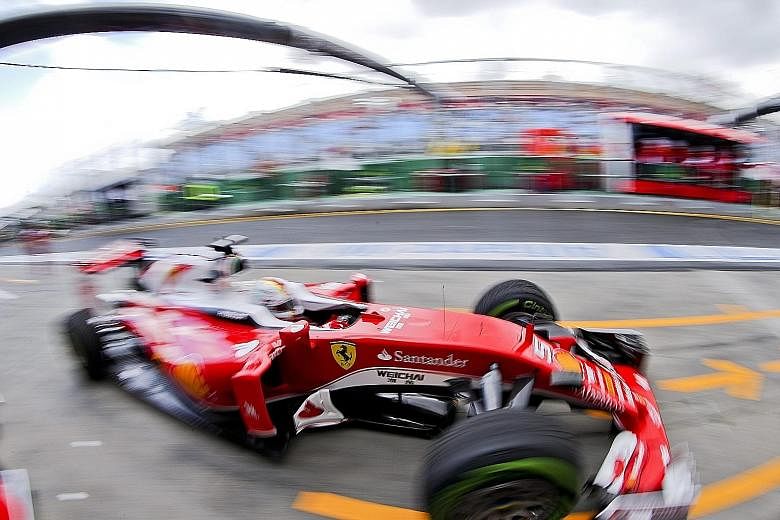Can Ferrari beat Mercedes? It's the big question as the 2016 Formula One season started in Melbourne yesterday with opening practices.
But putting aside the development that Ferrari have done with their SF16-H and their chances of beating Mercedes' evolutionary F1 W07 Hybrid, let's look at some crucial changes intended to spice up the action.
On the face of it, the changes to the qualifying process seem redundant, since it was a part of F1 that worked well. But now a potential tripwire has been introduced, in the hope that some of the stars and their teams won't get it together at the critical point and will thus enliven races by having to start further back.
Previously, the five slowest cars were eliminated after the first session, then another five after the second, leaving 10 to battle it out for the first five rows of the grid.
Here's how the new system will work. The three-session knockout system remains, but the clock will start ticking earlier in each session.
Q1 will run for 16 minutes. After seven of them, the current slowest car will be eliminated. This process will repeat every 90 seconds until 15 cars are left.
After a break, they will proceed to Q2, which will last for 15 minutes, and after six, the 90-second elimination periods will start again until only eight cars are left.
After another break, Q3 will then see all eight running, but after five minutes, six further cars will be eliminated over 90-second periods until only two cars are left in a head-to-head fight for pole.
Will it shake up the grid?
Possibly, as some big scalps will get it wrong. But it might prove too complex for spectators.
"I'm looking forward to trying it out, maybe we'll be surprised," Lewis Hamilton says. "We'll see."
Then there is tyre choice. Instead of two dry compounds, Pirelli will nominate three.
Here, that means the mediums and the softs, with the supersofts reserved for those who make Q3. In the race you still have to use two of the three compounds, but during Q3 you could use your supersofts too, instead of one of the other compounds.
Drivers have had to nominate their choices very early for races such as Canada, which could upset things if they have been too optimistic.
This is a good move, since it enables drivers to have a wider choice and strategic flexibility, especially as team-mates need not choose the same rubber. Anyone could benefit from this, if the strategists and drivers are smart enough.
Hand in hand with this goes the greater restriction on radio communications between drivers and their engineers.
Basically, once the red lights go out the drivers are on their own, and unless something safety-related is amiss with their car, the engineers are no longer allowed to give them information relating to performance or driving style.
This is serious stuff. These cars are very complex and if you just take a look at the steering wheels, you see how many dials and knobs the drivers have to play with at 100m a second.
Now their task is even more difficult as they have to race while keeping tabs themselves on everything else going on around them, while processing their own strategy. But they now have the freedom to break out of previously inflexible strategy, to gain advantage over a team-mate.
This could be the best change this season.
So will Ferrari challenge Mercedes? The signs are there.
"Part of me hopes that Ferrari are close," Hamilton says. "Looking at their testing times and their upgrades here, I feel it might level out. But I might be wrong, and I will be super happy if that is the case."


